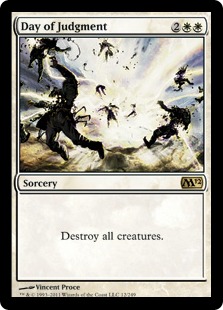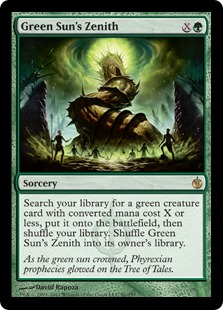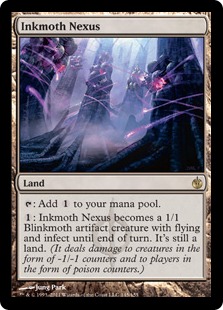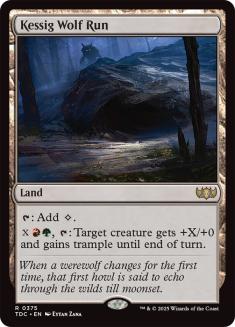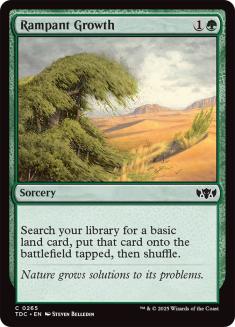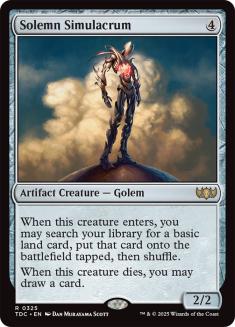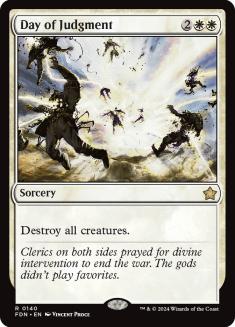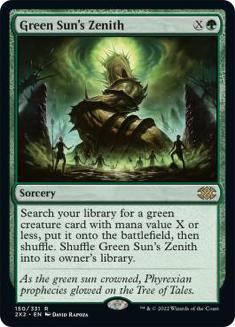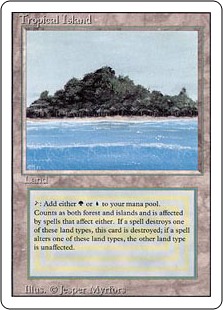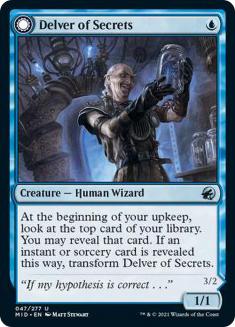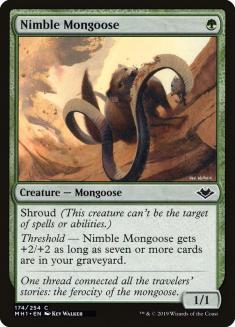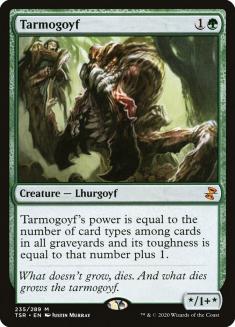As I sit down to write, only minutes have passed since the June 20, 2012 DCI Banned & Restricted List Announcement was released. Or, in the case of Standard, minutes have passed since the lack of announcement. For those of us who were expecting Delver of Secrets, or Snapcaster Mage, or any of the format’s other blue cards to be banned, it’s easy to feel despair and hopeless resignation. However, the DCI doesn’t seem to think that U/W Delver is too good, and perhaps they’re right.
There are some other people out there that don’t think U/W Delver is too good.
Creatures (32)
- 4 Birds of Paradise
- 1 Acidic Slime
- 1 Borderland Ranger
- 1 Inferno Titan
- 2 Phyrexian Metamorph
- 4 Blade Splicer
- 1 Fiend Hunter
- 3 Avacyn's Pilgrim
- 2 Strangleroot Geist
- 3 Thalia, Guardian of Thraben
- 3 Huntmaster of the Fells
- 4 Restoration Angel
- 1 Zealous Conscripts
- 1 Wolfir Silverheart
- 1 Ulvenwald Tracker
Planeswalkers (2)
Lands (24)
Spells (2)

Creatures (33)
- 4 Birds of Paradise
- 4 Borderland Ranger
- 4 Blade Splicer
- 4 Avacyn's Pilgrim
- 3 Geist-Honored Monk
- 3 Strangleroot Geist
- 3 Thalia, Guardian of Thraben
- 4 Huntmaster of the Fells
- 4 Restoration Angel
Lands (23)
Spells (4)

Creatures (24)
- 2 Fume Spitter
- 2 Phyrexian Metamorph
- 3 Porcelain Legionnaire
- 4 Diregraf Ghoul
- 4 Gravecrawler
- 2 Falkenrath Aristocrat
- 4 Geralf's Messenger
- 3 Blood Artist
Lands (23)
Spells (13)

Creatures (27)
- 4 Llanowar Elves
- 4 Birds of Paradise
- 1 Acidic Slime
- 1 Borderland Ranger
- 1 Aether Adept
- 1 Inferno Titan
- 1 Phyrexian Metamorph
- 1 Deceiver Exarch
- 2 Phantasmal Image
- 1 Daybreak Ranger
- 4 Strangleroot Geist
- 4 Huntmaster of the Fells
- 1 Zealous Conscripts
- 1 Wolfir Silverheart
Lands (24)
Spells (9)

U/W Delver will almost certainly continue to be Standard’s most popular deck. However, we can take these strong finishes from Martin Juza and others as assurance that Delver will not go uncontested in the coming weeks. These fresh, new, successful decks have a couple of things in common. The first is that they’re all built with beating Delver in mind. The second is that they can all be attacked in a similar way.
Creatures (18)
- 3 Solemn Simulacrum
- 3 Birds of Paradise
- 1 Acidic Slime
- 1 Borderland Ranger
- 4 Primeval Titan
- 1 Wurmcoil Engine
- 1 Viridian Emissary
- 1 Elesh Norn, Grand Cenobite
- 1 Phyrexian Metamorph
- 1 Huntmaster of the Fells
- 1 Sigarda, Host of Herons
Lands (26)
Spells (16)

Wolf Run Ramp Pod was originally designed by Jarvis Yu, Bing Luke, and myself and was my favorite deck before the release of Dark Ascension. The reason I’m reviving it today is that it’s the perfect way to beat the decks that are trying to beat Delver. While sharing a lot of cards in common with Naya Aggro and RUG Pod, Wolf Run Pod one-ups them by being bigger and more powerful in the late game. Most importantly, it makes use of the devastating Day of Judgment, which is at its best in this type of deck because of its ability to quickly put away a game when it’s given breathing room.
Max Brown piloted the deck to a 7-2-1 finish at the SCG Standard Open in Worcester on June 9th, and I had the pleasure of trying his list the following weekend in Indianapolis. I put up a 6-4 record, but I feel that my suggested decklist is an upgrade from the one I used there which did not have a carefully thought out sideboard. My losses came from going 2-1 against Delver, 1-2 against Solar Flare, and 0-1 against Frites. Personally, beating Solar Flare and Frites is not my top priority; what really stood out to me about the tournament was the way I crushed every non-blue deck I faced.
Wolf Run Ramp, in all its colors and varieties, has a natural edge over beatdown because of its ability to go over the top of opposing creature decks and the speed and consistency with which it executes its game plan when undisrupted. Beyond that, white Wolf Run is especially good against creature decks because of its access to Day of Judgment, Elesh Norn, Grand Cenobite, and powerful sideboard cards. For today’s metagame, red removal alone comes up short because of its inability to handle the four toughness creatures—Restoration Angel and Hero of Bladehold—which are becoming so prevalent.
While Day of Judgment outclasses all of red’s removal, the one thing I do miss about having lots of Mountains in my deck is the sheer amount of removal I had access to. In red, when Slagstorm isn’t enough I can branch into Whipflare, Bonfire of the Damned, Galvanic Blast, Pillar of Flame, and the list goes on beyond that. Beyond Day of Judgment, white only has inefficient spot removal like Oblivion Ring. Max Brown spoke highly of Terminus, but I didn’t like the way it competed with Primeval Titan and Wurmcoil Engine for its spot on the mana curve.
What makes Wolf Run Pod great, though, is the way it uses creatures for defense instead of relying entirely on removal. For one thing, mass removal is dramatically more powerful when you let your opponent amass an army rather than burning each of their creatures one at a time. The defensive creatures in Wolf Run Pod—Viridian Emissary, Borderland Ranger, Solemn Simulacrum—force the opponent to overextend and leave you with lingering card advantage when you end up Wrathing them away.
The creature-based defense means you have more threats against control, especially in conjunction with Kessig Wolf Run, and ends up being a better solution for some of Standard’s common problems. Geist of Saint Traft can’t be killed by spot removal anyway, so throwing expendable two-power blockers in front of him will ask the opponent to either spend tons of Vapor Snags or main phase a Restoration Angel, leaving him open to a Day of Judgment blowout. Against Zealous Conscripts, one of Wolf Run’s greatest enemies, Day of Judgment can preserve your life total and clean the board, and you can always make sure you have chump blockers to help you survive your opponent’s big turn.
The Decklist
The maindeck of my suggested list is geared very much for Delver and the other aggro matchups, while the sideboard is geared very much for control. In Max’s list and the one I used at in Indianapolis, the Gut Shots and the fourth Day of Judgment were sideboard cards. However, I found myself sideboarding them in nearly every match, as almost every well-represented deck plays either Delver of Secrets or Birds of Paradise. It’s much better to maindeck as much anti-aggro as possible, which has the side effect of freeing up sideboard slots for potent anti-control tools like Beast Within, Purify the Grave, and Karn Liberated.
Ramp Pod maintains all the strengths of classic Wolf Run—ramping, mass removal, value lands, the one-card win of Primeval Titan—but sacrifices the weaker cards for a more balanced mana curve and a larger toolbox of searchable creatures.
At its heart, this is a Green Sun’s Zenith deck. Spending an extra mana on your creature is not always appealing in a format as fast and brutal as Standard, and you cannot use Cavern of Souls to make Zenith uncounterable. However, Zenith is an invaluable addition to the deck because of the way it contributes to smooth draws and consistency. Ramp decks are forced to play so much mana that they’re vulnerable to flooding if their few trumps cards are somehow dealt with. Green Sun’s Zenith, being a card that can provide either mana or a finisher, does a lot to solve the problem.
Birthing Pods combine with the Zeniths to give the pilot more flexibility in the way the game plays out. A common complaint from Ramp players is that they don’t feel the game is “in their control.” Traditional Wolf Run often just plays one spell per turn at sorcery speed and hopes for the best. Ramp Pod players can adapt to situation at hand by constructing a winning long-term plan, or by immediately searching for the appropriate card for what they see on the board, or what they think may be in the opponent’s hand.
The Birthing Pod Chain
You might notice that the two- and three-drop creatures are cut down to the bare bones minimum in this deck. Viridian Emissary could potentially be a two-of, as it’s very good for certain matchups and very good with Day of Judgment. Borderland Ranger doesn’t exactly shine, but it is a nice addition to the deck because of the ability to Zenith and Pod for a relevant three-drop where none existed before. However, I wouldn’t play more than one.
Max and I tried out Somberwald Sage, and she was very good at times (Zenithing for her led to my win against Solar Flare), but in general she was swingy and not completely integral to the gameplan. If only she could help to cast Green Sun’s Zenith, I’d easily play several copies. As it is, though, I feel comfortable playing only a few choice early drops because Ramp Pod does not typically need to go slowly up the chain from one to seven. Instead, the Birthing Pods are simply value cards, typically to be played in the mid and late game to cycle through devastating creatures like Solemn Simulacrum, Acidic Slime, and Primeval Titan. They add a valuable extra element to the deck for game 1, especially against control, but they are among the first cards I look to sideboard out against Delver and some of the other fast decks of the format.
The Matchups
U/W Delver
While the main strength of Ramp Pod is against non-blue decks, the Delver matchup is not bad at all. If I’m being realistic, I’d say it’s just a little worse than 50/50 against a skilled pilot. The great thing is that the cards that Delver can often turn to in order to beat up on Wolf Run—Hero of Bladehold, Restoration Angel, Geist of Saint Traft—are easily answered by Day of Judgment. Unlike traditional Wolf Run, which can’t present threats before reaching six mana, Ramp Pod has a smooth curve and can fight the good fight at any stage of the game. Cavern of Souls is a great addition to the deck where this matchup is concerned, as being able to resolve a Primeval Titan is still one of the most straightforward ways to beat Delver so long as you aren’t facing imminent death when you do so.
G/R/x
This is the reason to play the deck. You’re bigger and more powerful, and because of that, Day of Judgment will typically lead to a win. You need not blow them out with a three of four for one, because emptying the board in the midgame buys you enough time to start dropping Titans.
The only tricky aspect of this matchup is Zealous Conscripts, which you should expect to be a maindeck card in Birthing Pod and a sideboard card otherwise. In most games, it’s easy to play around Conscripts by keeping your life total high, the board empty, or a chump blocker at the ready. Sigarda, Host of Herons really shines as a win condition when you expect Zealous Conscripts, and always consider her as a Green Sun’s Zenith target. Even beyond this matchup, she will almost always lead to a win against any opponent without a Clone in their hand. Entreat the Angels off of the sideboard offers one more win condition that isn’t vulnerable to Conscripts.
Because of Zealous Conscripts, you should lower your mana curve during sideboarding. I typically trim two of the four Primeval Titans (keeping Wurmcoil Engine and Elesh Norn) and consider Phyrexian Metamorph and Birthing Pod as my next cuts. You’ll still have enough late game power, especially with Green Sun’s Zenith, to be guaranteed victory as the game drags on, but you’ll be less vulnerable to a quick blowout and more able to plan around Zealous Conscripts.
Control
You have the tools to beat pure Control, like U/B, between Birthing Pods, value creatures, and Cavern of Souls. Unfortunately, the most popular control deck at the moment is Solar Flare, which is quite a bad matchup. If there’s one card you do not want to face with this deck, it’s Phantasmal Image, and if there’s a second, it’s Sun Titan to return them all from the graveyard to play.
Traditionally against control, you can play a slower game, try to get max value out of all of your cards, and wait for either Cavern of Souls or a three-mana buffer to cast your finishers. However, Solar Flare threatens to set up an immediate win in Sun Titan / Phantasmal Image on turn 6, so you have to force the action more than I normally like to do.
This matchup is certainly winnable, as you can punish them severely with Birthing Pods and Acidic Slime if they stumble. Also, the sideboard of my suggested decklist has this matchup in mind. Beast Within is the best card against them since it can act as land destruction, a removal spell for Sun Titan or planeswalkers, or free your Titan from an Oblivion Ring. Karn Liberated is a huge trump card, and Zealous Conscripts and Purify the Grave are very nice tools.
Wolf Run Ramp
You have some strengths and some weaknesses in the pseudo mirror, but overall I’d be happy to play it. Often, the first player to land a Titan will be the winner, and without Sphere of the Suns, that’s less likely to be you. However, sometimes you can overcome that disadvantage because Elesh Norn can go over the top, and Birthing Pods can bury them in card advantage. While I wouldn’t specifically describe Day of Judgment as a good card for the Wolf Run mirror, it’s certainly a million times better than Slagstorm and can be a nice tool for setting up a win, especially if they don’t expect it.
A side effect of sideboarding Beast Within and Karn Liberated against control is greatly improving your postboard Wolf Run matchup. Additionally, not having Sphere of the Suns makes you less vulnerable to Ancient Grudge, which typically blows out traditional Wolf Run.
Bonus Section: Mulligans
Since mulligans have been a theme of this column lately, I’ll take this opportunity to share two very tough calls I encountered at the SCG Open Series: Indianapolis featuring the Invitational weekend. Let me know in the comments what you would do if you were faced with these hands. I’ll post my own opinions within a day of this article being published.
A) This is a real hand that I had while playing Ramp Pod in the SCG Standard Open. On the draw against U/W Delver.
B) This is a hand that Dustin Taylor had in the finals of the SCG Legacy Open. On the draw, RUG Delver against Goblins.

